– Click here to view all interventions on this project–
Research Question
“How can the Chinese ballet industry improve unhealthy body standards and promote a healthier, more inclusive body image for dancers?”
Blog 1 |3 October
–Project schedule–
| No. | Date / Time | Event / Work | Location | Form | statuses |
| 1. | 10/07-18/07 | Project investigations | Online | Questionnaire | completed |
| 2. | 05/08-20/08 | Intervention for Dancers | China | -Interviews -documentaries | completed |
| 3. | 01/10-10/10 | -Venue booking -event conception | completed | ||
| 4. | 11/10-21/10 | -Find a Curator -Curatorial Workshops -Preparing Materials -Collecting the guest list | completed | ||
| 5. | 22/10 | Conducting a second intervention for public | CSM D105-106 | workshop | completed |
| 6. | 22/10-23/10 | Collecting and analysing information | on going | ||
| 7. | 24/10 | Evaluation Report Draft | online | Paperwork | completed |
| 8. | 24/10-31/10 | -Contact external industry experts/leaders -Framing the third intervention with industry leaders/experts | online | Email | completed |
| 9. | 25/10 | Filming of project presentations and promotional videos for the festival. | CSM | Tiktok | completed |
| 10. | 01/11-25/11 | Third intervention with industry leaders/experts | on going | ||
| 11/11 | Last tutuorial | ||||
| 11/11-30/11 | -Idea festival presentation -Preparing materials -Inviting guests -Inviting partners | CSM | exhibit | ||
| 02/12 | presentation | ||||
| 06/12 | Festival |
Blog 2 |13 October – Contact the curator
Through David’s introduction, I got in touch with louason who was studying curation at Ual. after 5 minutes of Pitch, he quickly and professionally gave me lots of ideas for the Workshop.
He suggested that I should first consider the overall process, the specific number of attendees, and how many sections the exhibition should be divided into.
About the set-up of the venue:
- Where is the venue?
- Size of the site
- Design of the floor plan
- Zoning of the venue according to content
- Design of audience participation routes
On content design:
- What is the content entry point? –Body Anxiety?
- How does it resonate with attention?
- Converting data into visuals
- Analysing dancers from a mental/physical/industrial perspective
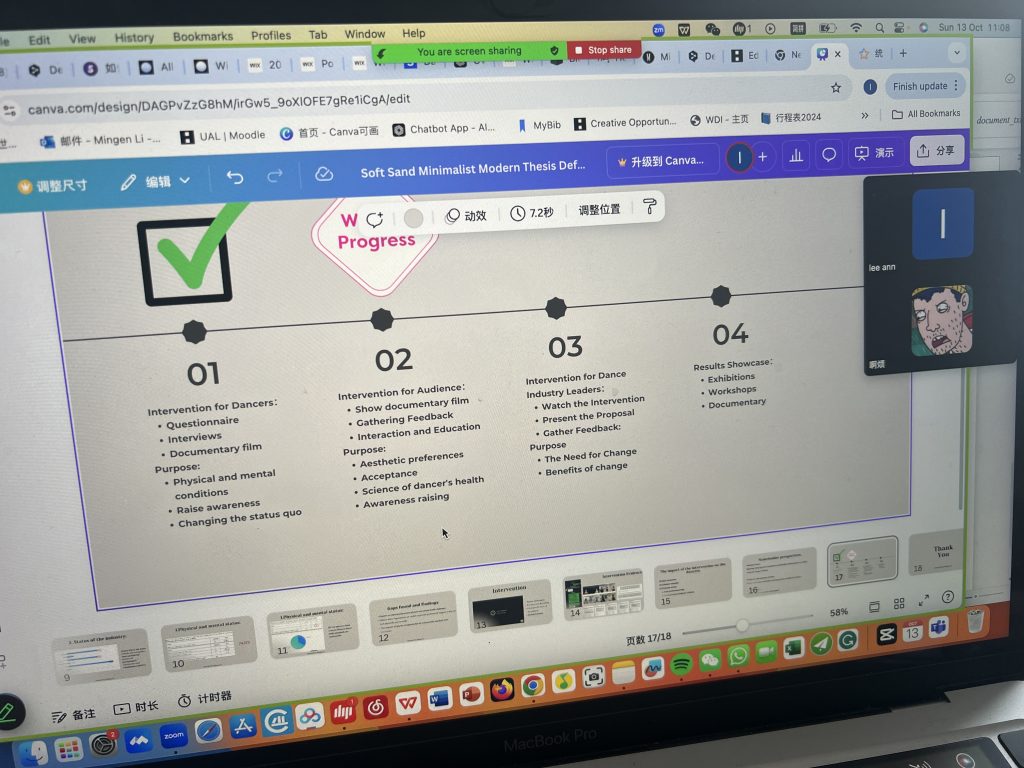
Online meeting with curators
Personal Reflection
In the process of seeking help, I broke down the limitations I had placed on myself one step at a time, and I realised that going it alone would not only be exhausting, but would also perhaps limit the chances of my project being made known to a wider audience as well as limiting the chances of me collaborating with a wider range of people and becoming familiar with each other.
I’ve always been self-doubting, hesitant, torn, and internally consumed, but working with Laouson has made me realise that finding like-minded professionals saves me time and gets me twice the result with half the effort. And there’s no embarrassment in reaching out for an invitation; even if I’m turned down, I have nothing to lose.
Blog 3|17 October ——Preparation of Intervention for the general public
Workshop preparations were completed this week, inviting guests, etc.
The purpose of this workshop:
- Test the public’s image of dancers
- To test if the workshop has the effect of raising public awareness
- To test whether raising public awareness can change the public’s stereotypical image of dancers.
- To test to what extent the public can accept muscular and healthy dancers.
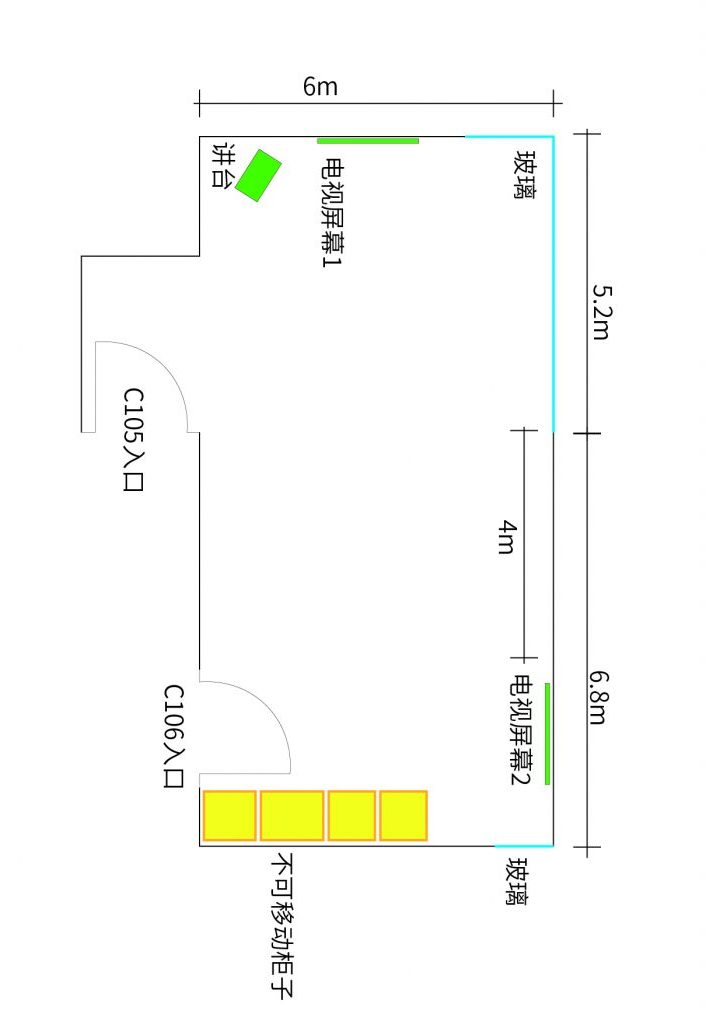
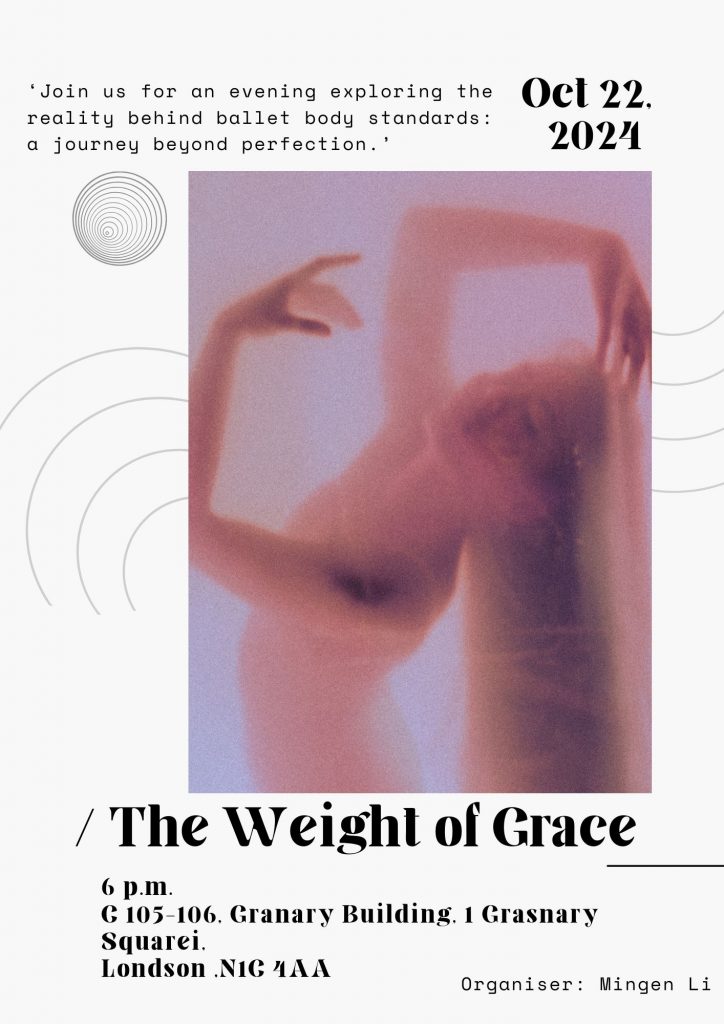
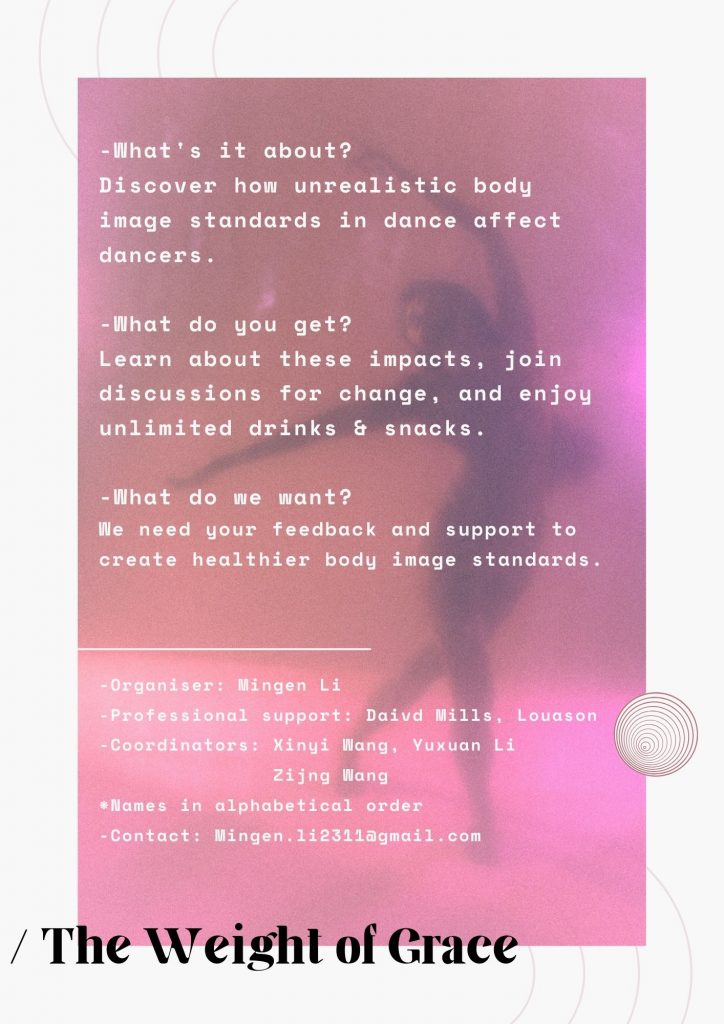
Regarding the idea of the workshop, the audience will be asked to choose between two groups of dancers according to their impression of the dancers before entering the door, and after entering the workshop, they will be shown the documentary, the data of the dancers and the analysis of the reasons for the dancers, etc. The audience will be asked to leave their own thoughts as well as to complete the questionnaire and to vote again before leaving the workshop.
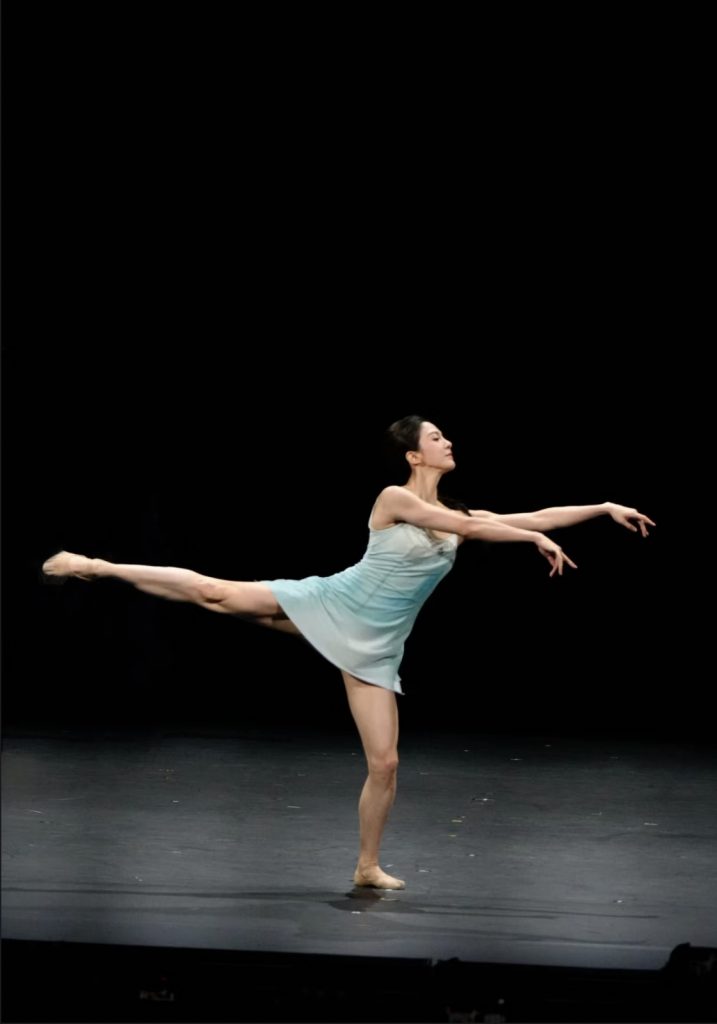

Blog 4 | 23.Oct ——Feedback and Reflections on Workshop
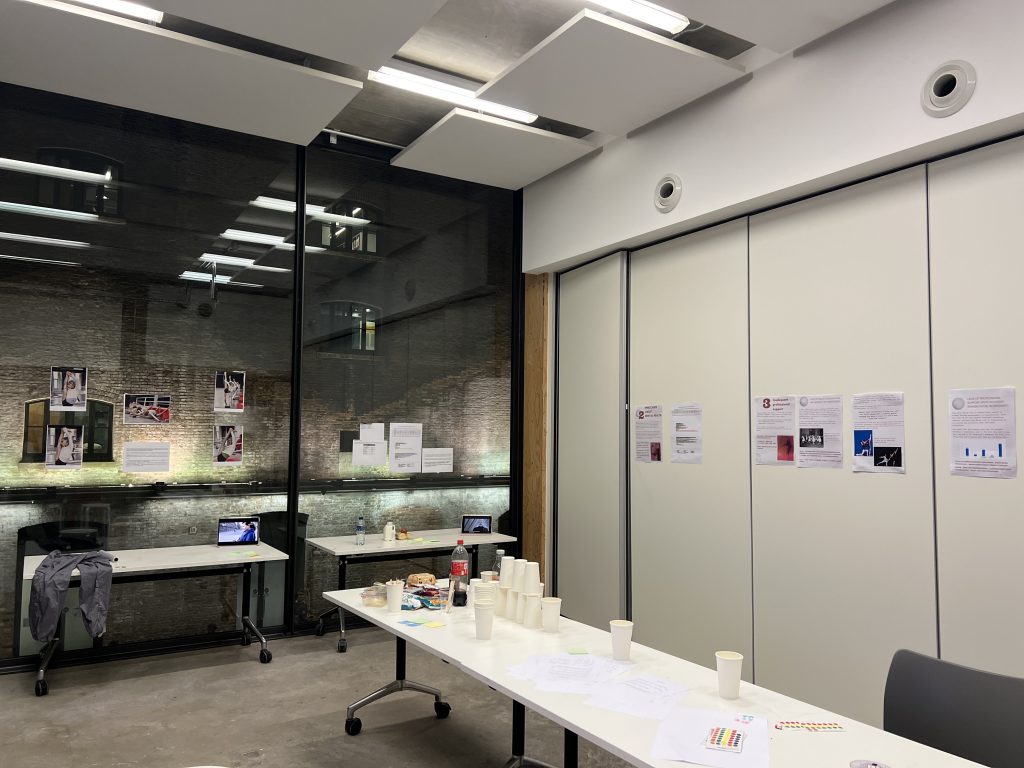
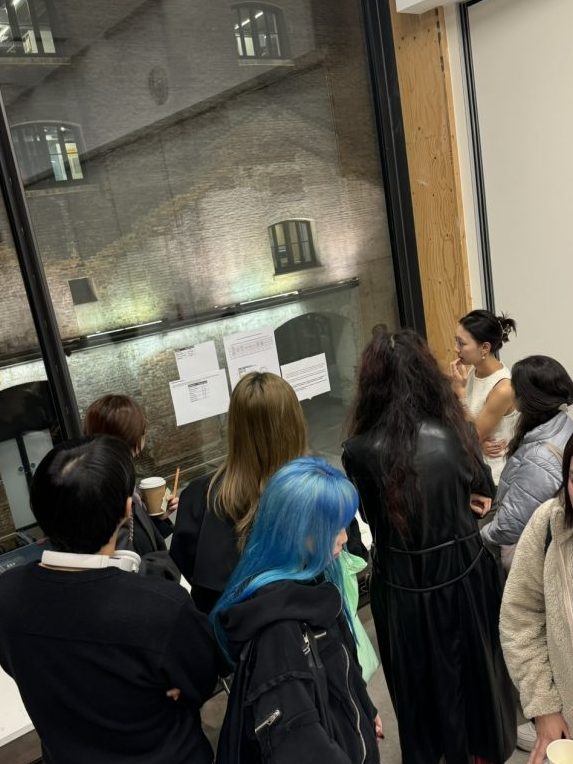
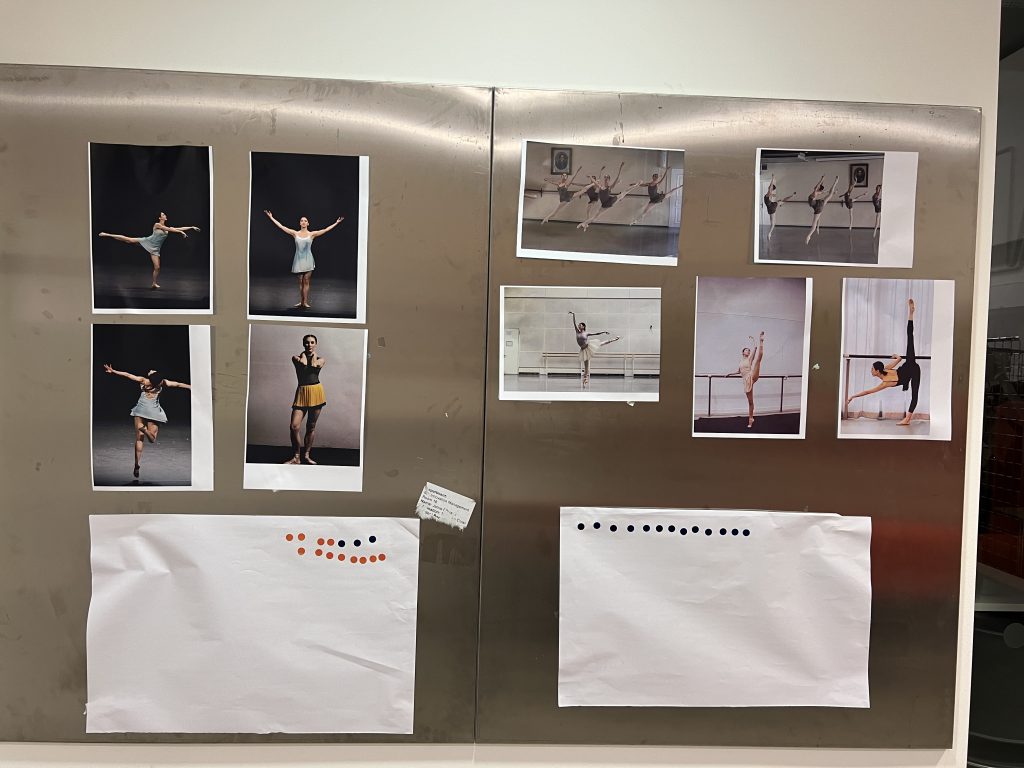
These are the aesthetic choices of the dancers, black before visiting the workshop and orange after visiting the workshop
Conclusion of the workshop:
- Audience members have strong stereotypes of dance body image
There were 16 participants in the workshop, of which 13 audience members chose slim dancers and 3 chose muscular dancers. - There is a lack of knowledge and awareness of dance among the audience. Many participants expressed a lack of familiarity with the dilemmas faced by dancers.
- The onslaught of data and images of dancers is effective in raising audience awareness and changing their choices of dancers of different sizes. Before visiting the workshop 3 people chose muscular dancers, 13 people chose slim dancers, while after visiting the workshop 16 people chose muscular dancers
- More than 70% of the participants said they would not let their children study dance/become professional dancers if the Chinese dance industry did not come up with more scientific body image standards and training methods
blog 5 |24.Oct——Feedback and Reflections on Dragon
Should I revise the wording of the research question to be more precise?
The DRAGONS raised some doubts about my research question, they said the direction was a bit lost, is this really for healthier dancers? More diverse? Or is it a desire to redefine standards?
My research question is :“How can the Chinese ballet industry improve unhealthy body standards and promote a healthier, more inclusive body image for dancers?”
Maybe I should consider :”‘How can the Chinese ballet industry improve unscientific body standards and promote a healthier body image for dancers?”
OR ‘How can the Chinese ballet industry improve unscientific body standards and promote dancers to grasp the balance between health and dance spectacle?
I might be able to find a solution to this problem by referring to the changes in the modelling scene. In recent years the modelling scene has seen more and more plus size models breaking size 0 models, and it is possible to analyse what has driven such changes
There is a lot of data that I have collected and I need to find an efficient and easy to understand way for people who don’t normally know about dance to get a clear picture of what the problem is in a short period of time? What are the background reasons? What are the potential solutions? Because I did not mention in my presentation the historical background that Chinese dance was inspired by Russia, and therefore body standards are strongly influenced by the body standards of Russian dancers, some of the DRAGONS were puzzled.
Blog 6 |5.Nov——Reflections on the literature
Reflections on the connection between Chinese ballet and the Russian school of ballet and how the Russian school of ballet’s body standards have influenced Chinese ballet?
This is a copy of an article on the history of Chinese ballet from the China Cultural and Tourism Bureau – ‘Review and Prospect of the Development Path of Chinese Ballet Art.
More importantly, a large number of outstanding Soviet dancers came to China to help us train a whole generation of young dance elites, and a large number of Chinese students were sent to study in the Soviet Union. The Russian national school of thought, whether in music, dance or other fields of art, gave us the opportunity to study comprehensively, allowing us to broaden our horizons, learn from our inheritance, take fewer detours and accelerate our growth. This has laid a solid foundation for the establishment of our ballet career and academic thinking, and is crucial to the formation of our ballet’s artistic pursuit and style.
As can be seen from this paragraph, Chinese ballet developed under the influence of the former Soviet Union (now known as the Russian School), while at the same time many Chinese dancers at that time travelled to the Soviet Union to study ballet and returned again to China to set up dance schools, so the ballet styles and requirements of the Russian School had a profound influence on Chinese ballet that continues to this day.
I think we should have a higher goal for ballet, and that goal should be: to establish our own national school of ballet, so that it can stand in the forest of world ballet art with its unique style. …… is to creatively create and perform our own ballet, to keep exploring, to keep practicing, to not be afraid of failure, to cross the river by touching the stones.
Here the author suggests that after more than 60 years of development, Chinese ballet should gradually begin to establish its own school of thought, but he mentions more about dance styles and dance systems, whereas I think that redefining the ballet’s stature standards according to Asian genes is very important, and one of the elements that can make Chinese ballet go farther!
Blog 7 |05.Nov——Speak to joker
Target person:
1.Tang Ge,Headmaster of Dongguan Juliet Ballet Dance School, Vice Chairman of Dongguan Dancers Association, Secretary General of Ballet Professional Committee of China Social Art Association, Ballet Examiner of Beijing Dance Academy Examination School. Former main actor of Guangzhou Ballet, founder of Juliet Ballet Dance School.
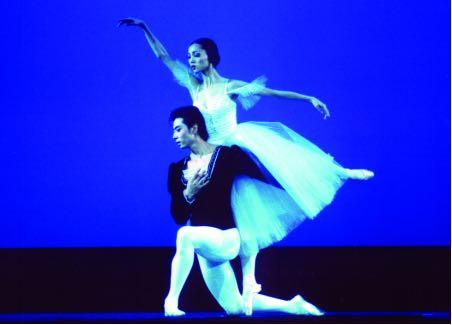
2. Zhang Yuexin, Master of Fine Arts, National Third Grade Performer. She graduated from the Ballet Department of Beijing Dance Academy and the Music and Dance College of Guangzhou University. She is a member of China Education Association. Currently teaches at the Dance Department of the Conservatory of Music, South China Normal University.
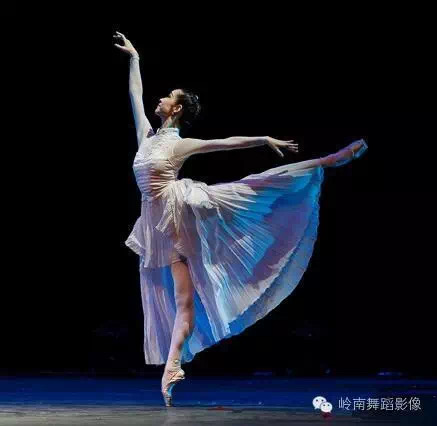
3. Zhao Ying is a young teacher in the Dance Department of the Conservatory of Music of South China Normal University. She graduated from Henan University Art College, majoring in dance choreography, and China Academy of Art, majoring in choreography. Her main research interests include the history and theory of Chinese and foreign dances, teaching dance culture and dance form training.

4. Liu Yan, Master, Lecturer. Graduated from the Dance Department of the Conservatory of Music of South China Normal University, The Hong Kong Academy for Performing Arts, Member of the China Education Association, Member of Guangdong Dancers Association.
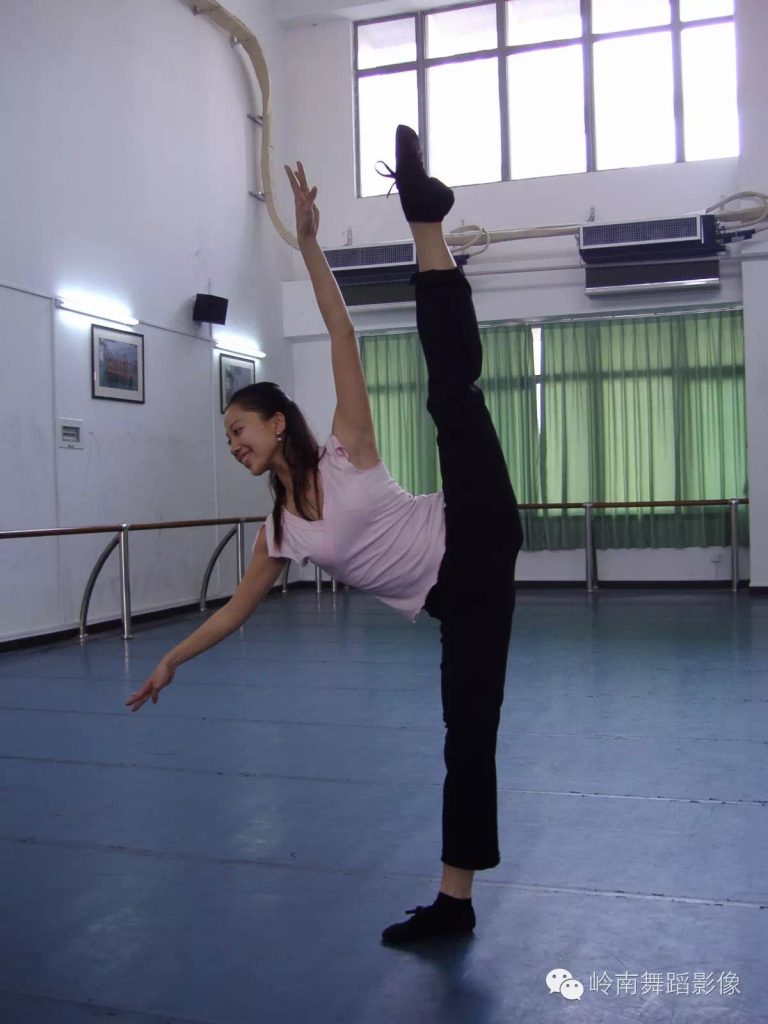
5. Alina Zhantieva, from Moscow, Russian Federation, graduated from the Moscow State Academy of Classical Ballet in 2005, where she furthered her studies in classical ballet technique with the Russian Ballet Master M. Korogodsky. L further studied classical ballet technique. Afterwards, she studied Menschova and Balanchin techniques in Zurich, Switzerland, and specialised in modern ballet.
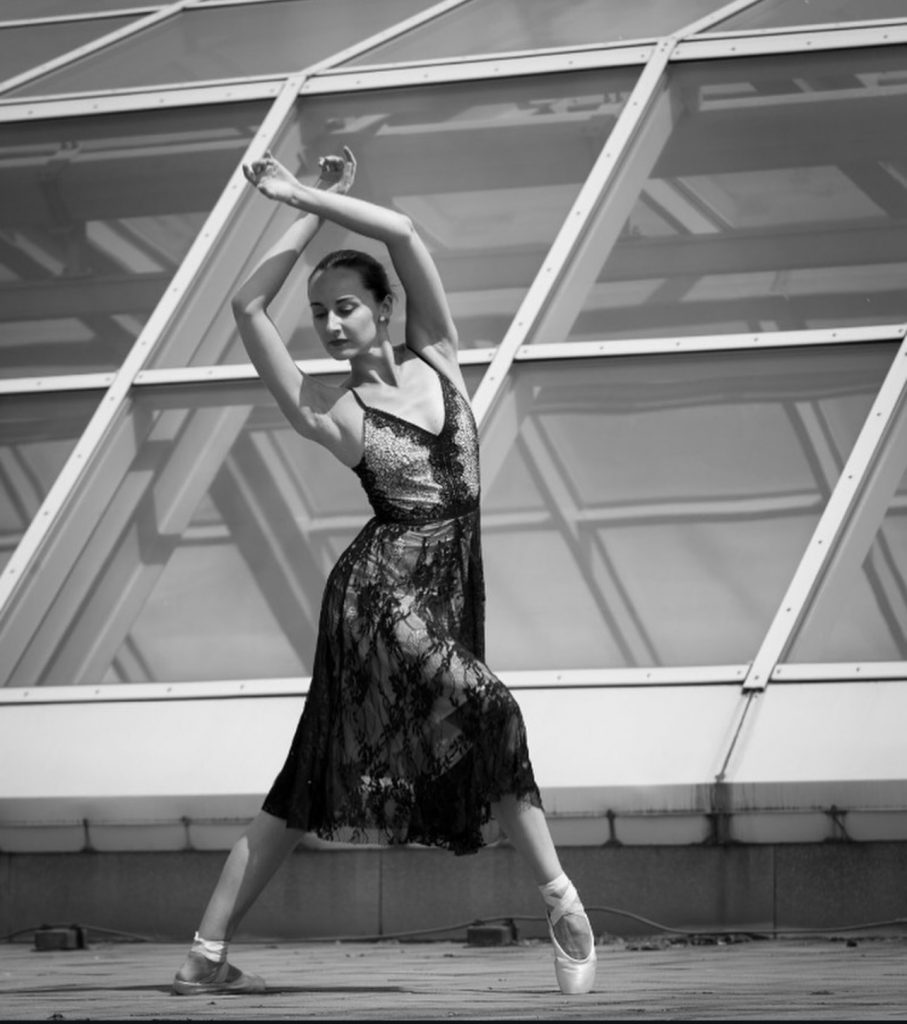
6. Mr Kong, with 9 years of lecturing experience, focuses on sports and dance rehabilitation, functional anatomy, posture correction, functional training, dance assisted training, etc. He has rich experience in dance rehabilitation and correction.
7.Yu hang, Graduated from the Royal Ballet School Shanghai Theatre Academy Affiliated Dance School (Shanghai Dance School) 2014 Gold Medal in the Junior Division of the South African International Ballet Competition Junior Division of Classical Ballet and Contemporary 2 Gold Medal in the 2015 Beijing International Ballet Competition Junior Division of the 2015 Hong Kong Canaan Star Ballet Competition Junior Division of the Gold Medal in the 5th Shanghai International Ballet Competition Junior Division of the Gold Medal in 2016 Participated in the YAGP American Youth Ballet Competition Gold Medal 2016 44th Lausanne International Ballet Competition Gold Medal and further study at the Royal Ballet School on a full scholarship 2018 Graduated from the Royal Ballet School as an Outstanding Graduate 2018 Joined the Royal Ballet to date

Blog 8 |10.Nov.Invitation to Joker & Interview Question Formulation
Evidence of Invitation












Invitation SMS:
Dear Mr/Ms/Ms [name of teacher/leader]:
My name is Mingen and I am currently working on a research project on Chinese dancers’ body standards at St Martin’s College, University of the Arts London. I would very much like to ask you questions about the research topic and listen to your valuable insights and rich experiences. Please consider this exchange as a relaxed and comfortable discussion.
This project will strictly protect the privacy of the participants and all personal information and experiences will be kept completely confidential and used only for research purposes. Your participation will have a profound impact on the sustainable development of China’s dance industry and the enhancement of the well-being of Chinese dancers, and we are confident that your insights will add immeasurable value to this project.
If you are interested in participating or need more information, please feel free to contact me. I have a flexible schedule in the coming weeks and look forward to hearing from you!
Contact: xxxx
12 Jokers and experts are currently invited:
Responses received: 10
No reply: 2
Declined: 3
Interview questions
- What do you think is the current body standard in the Chinese ballet/dance world? (Please be as specific as possible, e.g. height, weight, proportions, etc.)
- What do you think are the sources of these body standards? (e.g. historical factors, cultural influences, western aesthetic standards, popular aesthetics, industry traditions, etc.)
- What impact do you think these body standards have had on the development of the Chinese ballet/dance scene? (Positive or negative impacts, and specific examples)
- Do you think these standards are scientific and reasonable? Are they compatible with Asian genetics? Why? (You may elaborate in terms of physiology, psychology, artistic expression, etc.)
- What do you think about the curtain call video of the Central Ballet’s performance of La Bayadere in which many audience members thought that the female principal dancer (Qiu Yunting) was too thin?
- What do you think about the Royal Ballet School’s restriction of exercise for young dancers with a BMI of less than 6% and the requirement to gain weight?
- What do you think can be done to improve or change the current body image standards in the Chinese ballet/dance world to promote dancers’ physical and mental health and artistic development? (e.g. setting more scientific standards, strengthening professional support, changing social aesthetics, etc.)
- How do you view and deal with the issue of dancers’ body size in your practical work? (e.g. selection criteria, training methods, psychological counselling, etc.)
- Are you aware of the body image requirements in the ballet/dance world in other countries or regions? If so, what do you think are the lessons to be learnt?
博客. 9 | 11 月 12 日 – Joker 的回复
yuhang, a dancer with the Royal Ballet, declined to be interviewed because she feels that the issue of body standards is a very sensitive one in China, and as someone who has trained in both the Chinese and British systems and is currently a soloist with the Royal Ballet, the topic could potentially lead to controversy for her.

It was frustrating to be rejected, but as someone trained in Chinese and British ballet, her refusal was based on the fact that the question I was researching was too sensitive, which side-stepped the fact that body image requirements are problematic in the Chinese dance world, and that the dancers were aware of the difficulties that such questions posed for them, and of the fact that it would be difficult for them to challenge the Joker of the dance world in their own personal strengths.
Blog 10|15 Nov 2024 —— What is the Joker in china looks like?
The attitude of the Jokers can be felt in this report, when faced with the question of whether the Central Ballet of China will collectively gain weight like the dancers of the English National Ballet, the person in charge said, ‘We don’t need to gain weight because we don’t have such a situation as dieting, and we won’t follow the trend, our dancers are healthy!
Such a statement seems so ironic after I chatted with the dancers of the troupe, because the real state of life of the dancers of the Central Ballet is that they have received extreme and severe dietary constraints since they were young, not eating staple foods, hunger strikes and vomiting are the norm, and they can only drink some coffee, chocolate or milk a day after an eight-hour training session, and their body weight has been strictly controlled, and they are even physically punished or fined for putting on one or two pounds of weight. Joker’s attitude is a true demonstration of the fact that he has a very good attitude towards the world.
Joker’s attitude truly demonstrates the indifference, ignorance, and common sense of the leaders of the Chinese ballet industry.
Blog 11 |12 Nov 2024 —— More Intervention with the audience and Joker is underway.
Click to view
Additional interviewers:
Linyue (Click to view profile)
Graduated from the attached middle school of Beijing Dance Academy, she studied at Vaganova Ballet Academy and American ROCK Ballet School. She graduated from the Royal Conservatoire of Scotland with a degree in ballet and is currently studying for a Masters in Ballet at Roehampton.
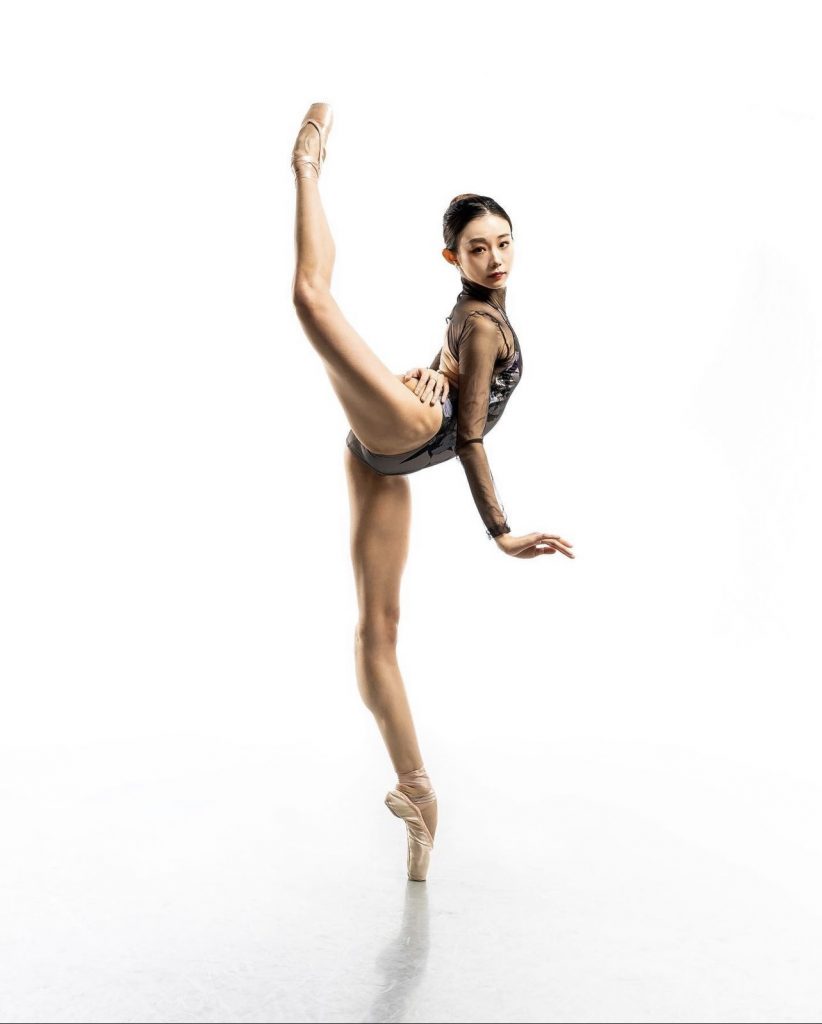
Yan Jia. Master’s Degree in Athletic Training, teaching Pilates since 2006 until now. 2017 employed at Beijing Dance Academy Affiliated High School until now.
She is a certified instructor of MERRITHEW Total Barre️ in Canada;
GYROTONIC️ Exercise System Certified Instructor, USA;
McEntire Pilates️ registered coach; BalancedBody️ COREALIGN certified coach; IMAA Ballates Barre certified coach;
The Centre️ certified coach; Scolio-Pilates️ certified coach.

18 Nov 2024 —— Feelings of the dialogue with Joker
After talking to the four Jokers, the biggest impression I got was that the environment and traditional culture have a profound impact on people. Jokers like Alina believe that it is right that there is no science in dance body standards, because it has nothing to do with science, but rather with whether or not it matches the traditional aesthetics and image of traditional dance, while Joker Liu Yan hopes that dance can be more scientifically guided to protect the physical and mental health of dancers, but in the face of the fact that many teachers in the dance industry are preferring to borrow from traditional ‘wisdom’ and experience rather than science, she has no choice but to protect her students’ health by not requiring them to lose weight as much as possible from her own personal point of view.
At the same time I felt that the environment can numb people, and I questioned the Jokers who swore up and down that their dancers were healthy. Every dancer I interviewed, without fail, said that they were on strict dietary control by their teachers at school, that they were perhaps only able to eat fluids with the huge amount of exercise they did every day, that there was a serious imbalance between consumption and intake, and that they were facing menstrual problems, problems with bone development, problems with their heart rate, and problems with malnutrition. And when I asked Joker Ms Yan Jia (a rehabilitator at the Beijing Dance Academy), she said that I couldn’t just take the dancers’ word for it; she believed that dancers are the ones who bring themselves into the victim’s perspective and have a victim mentality when they are asked to lose weight, thus describing the process as painful. I was shocked by this statement. Even if the dancers are lying verbally, the state of their bodies that they show is not a lie, and the physical condition caused by long-term weight loss and malnutrition is not a lie.
When I wished to seek further evidence, I asked Mrs Yan Jia what she could use to prove that the students had not suffered any physical injuries as a result of slimming down? Is there BMI data available? Were students given regular physical check-ups? She said she could not provide the data because she had not done such examinations comprehensively.
The situation described by Joker Yan Jia, a teacher at the Beijing Dance Academy, is the exact opposite of what the BDA students I interviewed, Lin Yue and Ma Faxing, described as their experiences at the school, where they stated that it was the norm to be strictly required to eat and drink.
Self-deceptive indifference
Joker’s statement that they don’t ask dancers in the ballet to lose weight sounds friendly and wholesome, but in reality it’s a way of marginalising dancers who aren’t skinny enough and letting the dancers work out for themselves what’s going on. As the dancer Lin Yue said, if you have good technical skills but your teacher still doesn’t choose you as the lead and still doesn’t let you dance the duet, then you should realise that you are not thin enough.
The Jokers believe that in a ballet company, dancing is already the dancer’s job, and the Jokers are not obliged to ask the dancers to be thinner as they do in school, but when the dancers don’t have the chance to go on stage many times, they should realise that it’s because they’re not thin enough. They believe that dancers should push themselves to lose weight and maintain a good image. This certainly adds to the mental pressure on the dancer, as well as leaving the dancer on their own to continue to be thin in the traditional, unscientific way that has been accepted for so long.
In fact, this kind of ‘self-realisation’ of the dancers is not only found in dance companies, but also in dance schools. Teachers will say ‘we no longer require dancers to be thin’, but in reality they are trying to marginalise dancers who they think are not thin enough, so that the under-appreciated students will realise the reason why, and then lose weight privately in their own way in order to meet the standard. This can also lead to students resorting to extreme ways of losing weight, such as skipping meals and taking diet pills.
This is very much in line with a part of Chinese culture: ‘formalism and a love of playing with words’.
When they say ‘we no longer require dancers to lose weight’ yes, they no longer make the requirement obvious, but imply it by ignoring the out-of-shape dancers.
When they say ‘our dancers are in good health’ because their body check-ups are just a formality, according to Linyue, a student at the Beijing Dance Academy, body check-ups are not done every year, but on a sampling basis, and their class of students has only been sampled twice in seven years, and the so-called body check-ups are nothing more than a body flexion test and a body weight check-up. Lung capacity.
When they say ‘we have a dance science department that promotes more scientific training methods’, the reality is that the dance science department just keeps writing papers that look more advanced, and science is never really integrated into the teaching and selection of material, and the majority of dance teachers continue to use the traditional slimming methods and training methods.
